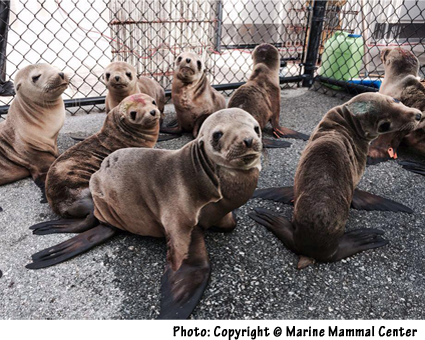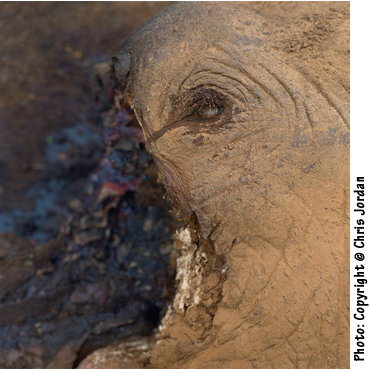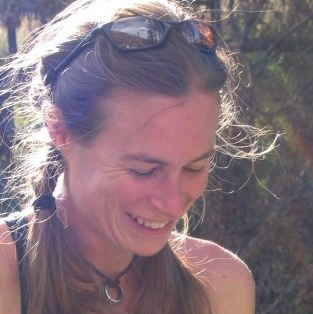April 2015, Issue #2
FRAGILE ONGOING
TABLE OF CONTENTS
Editorial
I. OPENING REMARKS
Jan Clausen
“This Moment the World Continues”: Writing under the Sign of Species Suicide
Robin W. Kimmerer
When Earth Becomes an ‘It’
Kathleen Dean Moore
The Rules of Rivers
II. GRIEVING
Cynthia Travis
The Music of Grief
Megan Hollingsworth
Pacific
Ruth Wallen
Cascading Memorials: Public Places to Mourn
Joan Kresich
Letter to a Yellowstone Wolf
Susan Marsh
Elegy for the Cranes
 The Hunters
The Hunters
Karla Linn Merrifield
William Bartram Triptych
Dana Anastasia
trinkets
Gillian Goslinga
To Witness
III. GUIDED
Deena Metzger
Dreaming Another Language: She Will Not Kill
Alexandra Merrill
Homage to Bees
Sheila Murray
Infiltration
 Prey
Prey
Judy Grahn
Dragonfly Dances
Laura D. Bellmay
A Call from the Edge
Carolyn Brigit Flynn
Grandmother Squirrel
Nora Jamieson
Fleshing the Hide
Sara Wright
Cardinals at the Crossroads
Valerie Wolf
Dreaming the Future
Megan Hollingsworth
Pacific
This my dear friends is utter sorrow
all that is at the bottom of the well
now rises to the surface
of a dying ocean and I am done weeping
I am cried out
I have given all my tears to the billion dollar boy
who on his 20th birthday treated 20,000 guests
to a party and of these a special 2 to the aerial
massacre of more than 20 elephants.
All the tears I have cried and those still to come
for the babes washing ashore
I give to these 3, who in amusement
killed the lovers, enough tears to wash them safely down river
where the ocean waits with open arms, wailing waves
to consume them. The boy, his friends,
the numbers, they are fiction. Yet
I am cried out, at last
resting in a patch of sunlight
long forgotten
I use numerals in this poem to call out the strangeness of determining an appropriate response to loss based on numbers
Notes:
There comes a point when the body is through experiencing sorrow induced by seeing others in pain. At this stage, my body is free to channel this potent energy directly to its creative expression in word or image. My body reached this freedom after more than a decade of chronic depression, cleared through African grief ritual in February 2007, followed by several years of debilitating sorrow that visited in steady waves when stories and images of loss from around the world came through various media channels. That my body is done convulsing does not mean that the pain of others no longer affects me; it means that I am free of processing it as if it were my own. Pacific recalls a point of witness to my own emotional evolution as I read a fabricated story about the billionaire boy’s birthday extravaganza in an online magazine that mocks true current events with such extremes. The obscenity of today’s world is such that this event is not too far from the truth, as elephants endure the faces of their loved ones hacked off en masse for ivory.
Curiously, it was not the time spent with elephants and their grief in July 2014 as part of my monthly witness practice that punched a hole in the bottom of my well, but this tall tale of a rich boy’s senselessness. At the beginning of July, as I was clearing my desk to begin afresh, I asked out loud whether I could be present with the elephants’ pain. Immediately after I spoke, I found myself in a ball on the floor, heaving, my gut convulsing. My body’s response lasted through a hot bath and to its exhaustion. I wanted merely to recoil into poem then. My body felt done, but it wasn’t. It was not until the felt experience of the rich boy’s numbness that my own being was liberated from the pain. I now experience a state of stillness like placid water when painful images cross my desk. Only my face cringes into a weeping smile. My head bows. Deep breath into my chest follows. My well now drains in a steady pulse of words arising from the pain that is bound to escalate, even if the growing wails from land and sea are felt and heeded by the many.

For the third year in a row, unusual numbers of sea lion pups are washing up on California shores. This year, sea lion pups are stranding earlier than ever before. Photo copyright The Marine Mammal Center
http://eepurl.com/bfgzjH
Inspired initially in fall 2014 by the tall tale, Pacific came to completion in February 2015 when a friend who works with the Marine Mammal Center of Marin County, California shared images of abandoned and starving sea lion babes landing like a flood on the Pacific coast long before any stranded babes would typically be seen. Even at the peak of the rescue season, the Marine Mammal Center has never experienced anything near to this record number of orphaned sea lions. I am a mother. To see these starving sea lion babes strikes a chord of sacred rage in me so real and deep it is ludicrous to describe this feeling in words. My hand, the hand that wrote Pacific, is fueled by this sacred rage rooted in the awareness that human negligence drives the famine.
The Pacific Ocean is near death, starved of oxygen and highly acidic, as close to death as any person gets who may have hope of revival. Summer 2013 saw millions of North Pacific krill washed up along the shores of Northern California and Oregon in the largest death event ever recorded in the region for this species of tiny crustacean, a crucial piece in the ocean's food cycle. Sardines, a major source of sustenance for many animals, are frighteningly scarce. Released in March 2014, the population assessment of Pacific sardines revealed a 74% decline in the last seven years; the population is now at its lowest biomass in twenty years, and there are no signs of recovery. (http://oceana.org/news-media/press-center/press-releases/federal-fishery-managers-vote-to-increase-sardine-harvest-despite-fishery-collapse). In addition to sea lion babes, families of whales are washing ashore along with seabirds. The loss is not merely a consequence of global human population increase, but of mass extraction and production activity that sustains the lives of only a segment of the human population. The loss is a consequence of lifestyle, my own included.
What is left but an immediate response as if this matters, as if I am responsible, as if there is just enough time in this moment of no time left? Because I am swept away by the grief of the whole world, my devotion, beyond keeping check on my own consumption, is my work for ex·tinc·tion wit·ness, www.extinctionwitness.org. The revolving monthly witness keeps me as close as possible to the pain experienced by starving sea lion babes, and by their mothers forced to abandon them because they are also hungry; as close as possible to the hunger of human refugees now counted in the tens of millions; and as close as possible to the grief of elephants who witness their beloveds’ faces hacked off for ivory. The witness allows me to remember what it means to be remembered in a time of need, so that I may truly love.

Poachers hack off the faces of male elephants to retrieve the whole tusk. The process takes hours with axes and is done while the elephant is still alive, because gunfire would attract attention. The tusks are literally worth more than their weight in gold and become more valuable as the elephants near extinction. 2014 was the largest elephant kill in history, not because there is a huge demand for ivory, but because individuals who trade in ivory are attempting to make elephants extinct, at which point ivory will go up in value tenfold. Elephant extinction is an intentional operation led by sophisticated Asian businessmen who are stockpiling the tusks. The extinction trade is one of the darkest things happening in the world.
Photos copyright Chris Jordan
http://www.chrisjordan.com/gallery/ushirikiano/#elephcarcasspano


Megan Hollingsworth, MS: is a mother, poet, dancer, and compassion activist. She is founder and creative director at ex·tinc·tion wit·ness, a collaborative art project offering creative witness for large groups that are and are becoming extinct. The work exemplifies, and encourages the felt experience and expression, of sorrow commensurate with the loss of an estimated 200 species per day, and the intolerably violent deaths so many endure. See www.extinctionwitness.org and www.meganhollingsworth.com
Want to comment on any Issue of Dark Matter, fill out the form here.
Copyright © 2014-2021 Dark Matter: Women Witnessing - All rights reserved to individual authors and artists.
Email: Editor@DarkMatterWomenWitnessing.com
Please report any problems with this site to webmaven@DarkMatterWomenWitnessing.com
